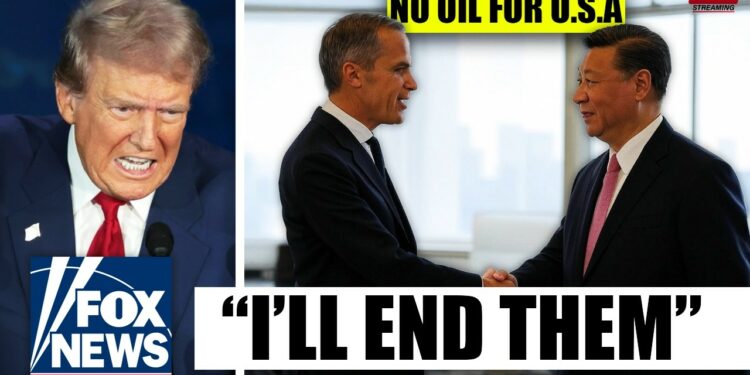Every truck, plane, or factory in America runs on an agreement nobody voted for. In early 2025, a single announcement shook the system: a 25% tariff on Canadian imports, with energy products at 10%. Canada, supplying 60% of U.S. oil imports—over 4.3 million barrels daily—quietly holds the reins of America’s energy supply. This isn’t just trade; it’s the economy’s lifeblood.
The tariffs, deemed a violation of NAFTA, sparked whispers of Canada weaponizing its oil. A subtle threat from Canada’s foreign minister—“We have oil and gas in our cards”—sent markets into a frenzy. Crude prices surged, U.S. refineries stockpiled, and industry leaders flooded Washington with warnings. Canadian oil, heavy and chemically unique, powers Midwest refineries that can’t switch to alternatives overnight. A supply cut would spike gas prices 30-50%, cripple consumer confidence, and trigger a political nightmare in an election year.
Canada’s energy minister, Jonathan Wilkinson, amplified the tension at CERAWeek, hinting at “options” without explicit threats. Markets reacted instantly: the price gap between Western Canadian Select and West Texas Intermediate collapsed, signaling a crisis. U.S. refiners hoarded oil, fearing a cutoff. The Strategic Petroleum Reserve—350 million barrels—offers less than three months of partial relief. There’s no quick fix; pipelines flow north to south, built for Canadian crude.
Behind closed doors, panic spread. The American Petroleum Institute and refinery CEOs urged the White House to de-escalate. Meanwhile, Canada faced internal fractures. Alberta, producing 80% of Canada’s oil, rejected Ottawa’s threats, knowing 97% of its exports go to the U.S. A cutoff would devastate Alberta’s economy, with no alternative buyers or infrastructure to reroute oil. Both nations were locked in mutual economic destruction—Canada couldn’t lose the U.S. market, and the U.S. couldn’t survive without Canadian oil.
By March, Canada’s new prime minister, Mark Carney, took a sharper tone, vowing to counter U.S. tariffs with unprecedented measures. His credibility as a global finance titan made the bluff chillingly effective. Trump’s team, despite public bravado, recognized the risk. In April, new global tariffs excluded Canada and Mexico—no announcement, no fanfare, just a quiet retreat. The U.S. couldn’t afford an energy crisis.
Markets stabilized, gas prices rose slightly, and the crisis faded from headlines. But the psychological impact lingered. Americans glimpsed their energy vulnerability; Canada proved its leverage without turning off the taps. The U.S.-Canada relationship, bound by pipelines and necessity, isn’t just trade—it’s survival. The system held, but the illusion of invincibility shattered.
This isn’t trivia; it’s a glimpse into power’s undercurrents. In 2025, Canada showed how a quiet neighbor could expose America’s addiction to its oil. The U.S. backed down, not from weakness, but exposure. The leverage remains, humming beneath the surface, a reminder: this system works until it doesn’t. You’re ahead of the curve now, seeing what most won’t. Stay sharp—because the next move is already in motion.
This version streamlines the narrative, eliminates repetitive elements, and maintains the dramatic tone while ensuring clarity and impact. Let me know if you’d like further adjustments or specific tweaks!























